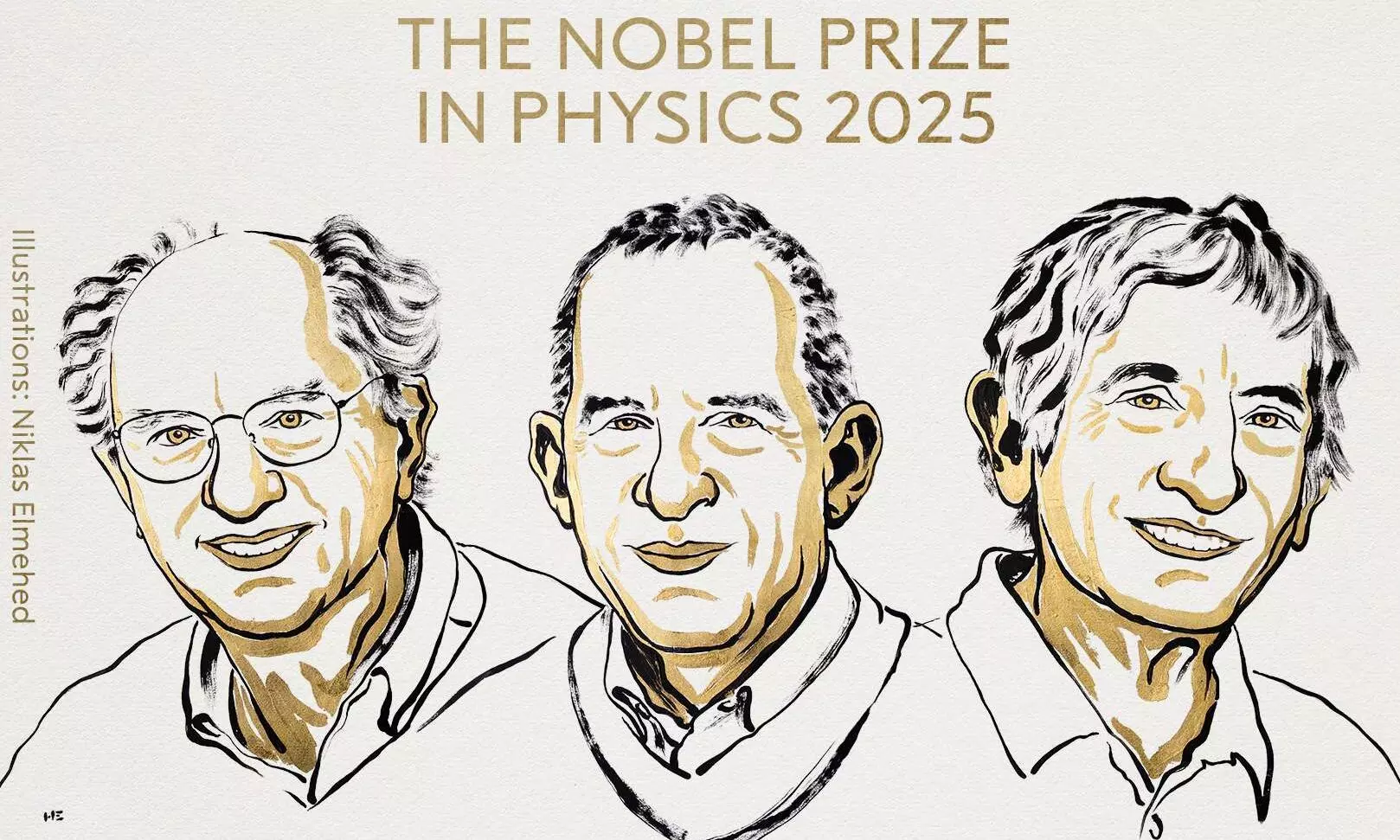
Macroscopic quantum tunnelling: Nobel Physics 2025 explained
Nobel Physics 2025 honors John Clarke, Michel Devoret and John Martinis for proving macroscopic quantum tunnelling—quantum effects in visible-scale systems

The 2025 Nobel Prize in Physics was awarded to John Clarke, Michel Devoret, and John Martinis for their pioneering experiments demonstrating macroscopic quantum mechanical tunnelling, that is, quantum behaviour in systems large enough to see, touch or build into devices.
Their work has helped bridge a long-standing divide: quantum mysteries are often confined to the microscopic (electrons, atoms) in textbooks, but these researchers showed that, under the right conditions, such effects can appear in circuits and devices we can hold in our hands.
What exactly did they discover?
The laureates built superconducting circuits - special circuits cooled such that they conduct electricity without resistance - containing Josephson junctions, tiny insulating barriers between superconductors.
In their experiments (mainly in the 1980s), they observed two quantum effects in those circuits:
Energy quantisation, which means that the circuit could only exist in certain discrete energy states, just like electrons in atoms.
Tunnelling between states - the circuit could “jump” from one state to another without going over the barrier - effectively passing through what classical physics would consider an insurmountable barrier. This is the macroscopic version of quantum tunnelling.
In classical physics, if a ball doesn't have enough energy to roll over a hill, it’s stuck- it can’t magically end up on the other side. But in the quantum realm, particles can tunnel through the hill. What Clarke, Devoret and Martinis showed is that the “ball” in their system was not just a single electron but a collective quantum object - many particles acting together - and it still could tunnel.
Crucially, their circuits were large enough to be tangible, not just theoretical or microscopic devices. That made their demonstrations powerful proof that quantum mechanics doesn’t end at the atomic scale.
Also Read: John Clarke, Devoret and Martinis win 2025 Physics Nobel
Bridging the quantum–classical divide
Many proposed quantum computers use superconducting circuits and Josephson junctions as qubits (the quantum bits). The kind of effects Clarke, Devoret and Martinis demonstrated are exactly what such devices need: coherent quantum behaviour in circuits.
One of the great mysteries in physics is: why does the bizarre, probabilistic quantum world so often give way to the predictable classical world we live in? These experiments push that boundary outward, showing that even large systems can preserve quantum traits under the right conditions.
Also Read: Nobel Prize in Literature 2025: Who will win the world’s biggest literary honour?
Better sensors and measurements
Quantum devices are extremely sensitive. Circuits that can harness macroscopic quantum effects may lead to improvements in magnetometers, gravitational sensors, and other precision instruments.
Laying foundations for quantum technologies in everyday life
The Nobel committee pointed out that their discoveries help convert “abstract quantum principles into applicable technology” — from computing to secure communications to sensing.
Also Read: Nobel Prize in Physiology or Medicine 2025: Three scientists share honour
Putting it in simpler terms — an analogy
Imagine a marble in a valley between two hills. Classically, if you don’t push the marble hard enough, it stays put. But what the Nobel laureates showed is that in their system, the marble sometimes appears in the next valley without rolling over the hill. It is as though it tunnelled through the hill itself, thanks to quantum rules. And the staggering part: the marble is big-not a single molecule-but a coordinated, collective object made of many particles.
That’s macroscopic quantum tunnelling.
Also Read: Trump says denial of Nobel Peace Prize would be 'big insult' to US after 'ending 7 wars'
What happens next?
While the experiments that won the prize were done decades ago, the implications are only becoming more relevant now as quantum engineering and quantum computing mature. Researchers will continue to explore:
How to control and preserve quantum effects in larger systems (overcoming noise, disturbances)
Design better qubits and circuits based on these principles
Develop practical quantum computers, sensors, encryption systems

